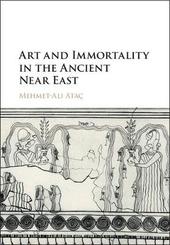
|
Art and Immortality in the Ancient Near East
Hardback
Main Details
| Title |
Art and Immortality in the Ancient Near East
|
| Authors and Contributors |
By (author) Mehmet-Ali Atac
|
| Physical Properties |
| Format:Hardback | | Pages:298 | | Dimensions(mm): Height 260,Width 185 |
|
| Category/Genre | Ancient and classical art BCE to c 500 CE |
|---|
| ISBN/Barcode |
9781107154957
|
| Classifications | Dewey:709.394 |
|---|
| Audience | | Postgraduate, Research & Scholarly | |
|---|
| Illustrations |
1 Maps; 45 Halftones, black and white; 14 Line drawings, black and white
|
|
Publishing Details |
| Publisher |
Cambridge University Press
|
| Imprint |
Cambridge University Press
|
| Publication Date |
8 March 2018 |
| Publication Country |
United Kingdom
|
Description
Discussions of apocalyptic thought and its sources in the ancient Near East, particularly Mesopotamia, have a long scholarly history, with a renewed interest and focus in the recent decades. Outside Assyriological scholarship as well, studies of the apocalyptic give significant credit to the ancient Near East, especially Babylonia and Iran, as potential sources for the manifestations of this phenomenon in the Hellenistic period. The emphasis on kingship and empire in apocalyptic modes of thinking warrants special attention paid to the regal art of ancient Mesopotamia and adjacent areas in its potential to express the relevant notions. In this book, Mehmet-Ali Atac demonstrates the importance of visual evidence as a source for apocalyptic thought. Focusing on the so-called investiture painting from Mari, he relates it to parallel evidence from the visual traditions of the Assyrian Empire, ancient Egypt, and Hittite Anatolia.
Author Biography
Mehmet-Ali Atac studied architecture, art history, and archaeology, earning his Ph.D. from Harvard Unviersity, Massachusetts in 2003. He was Whiting Post-doctoral Fellow in the Humanities at Princeton University, New Jersey (2003-2004) and Hetty Goldman Member in the School of Historical Studies at the Institute for Advanced Study, Princeton (2010-11). From 2004 to 2015, he taught at Bryn Mawr College, Pennsylvania. A scholar of the art of the ancient Near East, he is the author of The Mythology of Kingship in Neo-Assyrian Art (Cambridge, 2010).
|